Lowrance HDS Gen2, with StructureMap!
The breaking news today is that Lowrance is out with the new HDS Gen2 multifunction display series, and it has enough processing power to support an interesting new feature called StructureMap. Of course you need to have a StructureScan module and transducer networked to the MFD(s), but then you can see its output overlaid onto your chart in real time and/or save the scans for later perusal. The video on that HDS Gen2 page is the best way to get a sense of StructureMap, I think…
Of course the best way to see how well StructureMap works will be on the water, which I anticipate with relish. As well as what I hope is the inevitable adoption of the feature on Simrad MFDs. As a long time fan of StructureScan, and Humminbird’s original Side Imaging, I welcome new ways to interpret the data. I even wrote an entry describing how to use unmapped SS, and though I use it all the time to poke around the coast of Maine, it’ll be great if there’s an easier way to relate the imagery to a chart. However, this sort of semi-transparent overlay with some chart items on top, some underneath, is tricky stuff, and I’m reserving judgement…
At any rate, there are no less than seven models in the HDS Gen2 lineup, and now they all seem to have the LED screen backlighting technology that still looks good on the original HDS10. What I don’t see is any mention of are the advanced Broadband 4G radar features discussed here yesterday. But maybe the increased processing power makes dual independent radar ranges and/or Beam Sharpening control a future possibility? Lowrance has been good about regularly adding improvements to the existing HDS series, like the shortcut keys to favorite pages added last summer. However, that may mean Lowrance HDS Gen2 sports no other significant new attributes, besides StructureMap and increased speed (always a good thing). Or am I missing something?


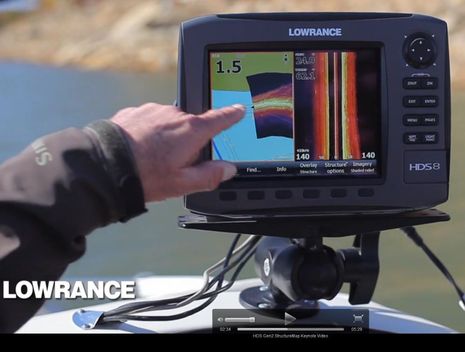
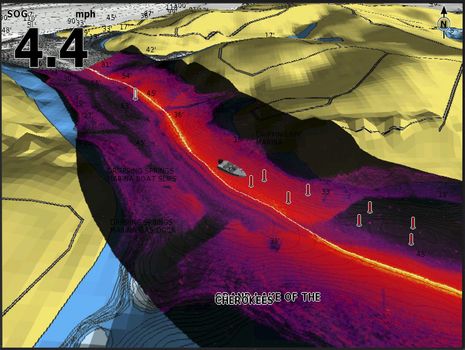

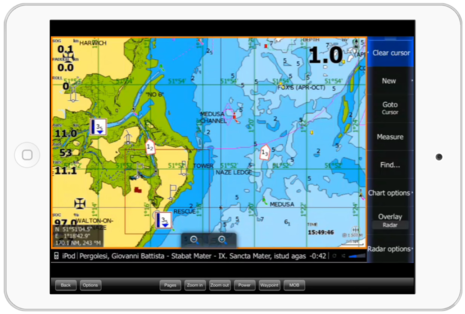
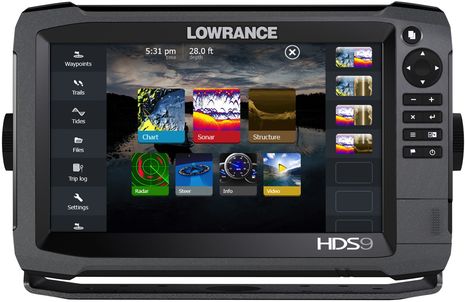
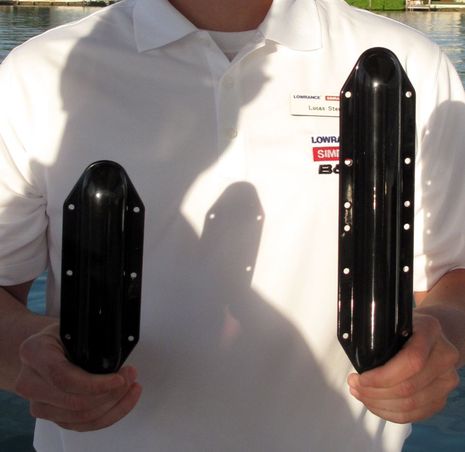
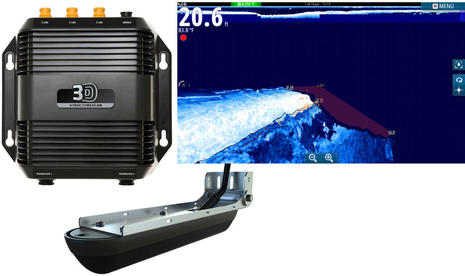








Ben,
The HDS Gen2 link you gave does have info on Broadband 4G radar…..
Right, Don, sorry if I confused. HDS Gen2 definitely supports 3G and 4G Broadband, just as original HDS does. But it does not seem to support advanced features like dual radar ranges and the ability to set the beam sharpening as you’d like, and 48rpm scanning, even though it has apparently gotten quite a boost in horsepower.
Interestingly, HDS Gen 2 -still- consumes less power than NSS/NSE.
The claimed consumption for HDS Gen 2 is even lower than Gen 1 (which I measured back in 2009.)
NSE 8 – claimed 33.6 W
NSS 8 – claimed 15.6 W
HDS 8 + 10 – claimed 0.8A @ 13.2V = 10.5 W
Either Norwegian Watts are different to American Watts, or they’re still using a different tech to run these Linux systems.
Given the power difference an estimated guess would be that the HDS displays run on ARM whilst the NSx displays run on some form of X86, probably VIA / Intel Atom.
Does someone care to open up their display and take a look?
Sadly these devices are soooooo…. expensive that they make it difficult not to go with the full 12v PC setup instead.
True for the bigger ones maybe, but I think USD 549,99 for a HDS-5M is a very good deal for a full function NMEA 2000 display with built-in chartplotter & radar integration. Works in the rain and sunlight. Try that with a cheap laptop.
I’m waiting for someone to root a HDS and put Android on it (preferably as a side-load).
Rooted HDS? Sounds great at first but that’s the thing, the hardware is not all that incredible. I would never buy an HDS-8 just for it’s hardware. Then software is good, but it’s soo limited ib scope.
You are right that for exterior use the HDS-5M is not bad as far as pricing goes, but 5″ is quite small. I mean it’s good for small fishing boats. But for in-cabin usage an HDS-8 hits 1600$+ i.e.: still a small size screen and strictly limited to navigation functions. That’s lots of money for charting!
For less money you can probably get a 12v PC, 20″ 12v monitor, ActiveSence NGT-1 NMEA 2000 to USB with good charting software (even TIMEZero for that matter). And that’s a full PC with Internet possibility that doubles as a 20” media center.
I’m not saying these devices have no reason to be and don’t do great things. Hell I love them. Hey, I read this blog assiduously! It’s just I can’t stop thinking those manufacturers are charging us crazy amount of money for not much. That said I feel those days are coming to an end!
Or maybe I just need a better job!
I don’t have any numbers, but here’s betting that profit margins on popular consumer electronics are darn similar to those on popular marine electronics. Sales price is just one factor; manufacturing volume must be a huge factor, along with marketing, development, and customer service.
And let’s acknowledge that what we’re talking about are consumer PCs versus dedicated marine PCs. An MFD these days is a locked-up PC with a very bright screen that can also go to near black; an interface — now headed toward a combo of touch, knob, and buttons — tightly integrated to its proprietary software; a whole rack of i/o, some of it very marine specific like NMEA 0183 and 2000; and a lot of waterproofing and ruggedization. There are open architecture marine PCs that come close, and high bright monitors, but they’re not cheap.
There are home and office PCs, and few for cars and RVs, that are inexpensive but let’s not trivialize the difference between a wheelhouse and a cockpit or flying bridge. As PC environments, they could hardly be more different, and mind you that a wheelhouse with a lot of glass is still too bright for most consumer screens, which also typically can’t get dark enough in the deep of night.
Hey, I love the 26-inch Vizio LED TV/monitor I put on Gizmo this summer, and the Mac Mini, but I think that they’re more likely to fail before the MFDs do, and using that big screen for night navigation will be tricky.
I agree with you Ben. What do you think the sailing communities’ latest iPad frenzy might be saying about the “perceived value” of said dedicated devices? I’m no expert but I think electronic hardware is cheap these days. A HDS-10 is 2100UDS and a brand-new 2012 Honda Civic is 15000UDS. I get what you are saying Ben, but I agree with some, it’s tough to swallow.
When boatyards make as many boats as Honda make Civics then you can ask for a full electronics fit (audio, instruments, cruise control, sat nav) for $3000. Until then you can’t expect it or feel ripped off about it. How many (even well run which is rare…) marine electronics companies make huge profits? Don’t see many of them living it up round here in flash boats with pretty girls (yacht brokers on the other hand, there are a few of them flashing their dollars!)
If you can find a consumer product – an iPad or cheap PC is a good example – that suits then use it, it’ll be cheap and do most of the job you want (maybe enough?) – but don’t expect it to meet all your needs, and it sure as hell won’t meet the needs of serious users (night, bad weather, salt water encrusted hands prodding at it day in day out).
Personally I see them as VERY useful add-ons to dedicated devices (hell – I’m writing this on my iPad, but I still use a $2000 PC with lots of expensive software in the office, this thing doesn’t do half what I need).
I think pads that run boating apps are great, and that there is going to be all sorts of exciting development in this area. This week I installed a Chetco N2K-to-Ethernet bridge and immediately had all sorts of Gizmo’s sensor data available on my iPad and Android phone, no MFD or PC involved. I also learned about a somewhat similar product that can bridge N2K, NMEA 0183, and SeaTalk over WiFi. More on both next week.
But I also suspect that expectations about what iPads and so forth can do are running beyond reality. It’s somewhat like the “hey, I can do it all cheaper with a laptop” concept. If budget is a primary concern, heck yes, use all the consumer electronics as you can. But why delude yourself that you’re getting all that’s possible with dedicated marine electronics? And why presume that marine electronics pricing is somehow more rapacious than consumer electronics pricing? The price points are way different, for sure, but there’s a reason.
Incidentally, I hope readers notice that I’m not one to say you “need” this or that. Obviously I’m very enthusiastic about evolving electronics; I think it’s useful and fun. But the key to safe and enjoyable boating is good sense, and if you have that, there are many levels of equipment that can work just fine for you.
Pete, I think we were simultaneously typing similar sentiments. A virtual high five to your direction, sir!
Dr Depth does similar sidescan charting overlay, although I have never used it myself, Does anyone else have experience with it? One of my clients is about to start charting some weed laden ponds using downscanning and the Dr, so any hints would be great!
Sorry, Rob, I haven’t tried DrDepth software but thanks for bringing it up. I can see now that the company has expanded its product line a lot since I last looked. And its worth noting that the original DrDepth can help someone build bathy maps from simple depth sounder data:
http://www.drdepth.se/index.php?l=gb
The best thing is that you will be able to share your DSIs with others. In a few years, maybe you have the whole underwaterworld on your HDS.